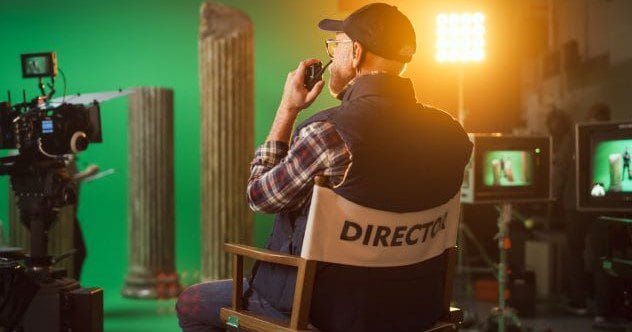The remake has become a staple in contemporary cinema, especially with English-speaking audiences often avoiding subtitles. While remaking films isn’t new, it’s rare for the original director to helm the same movie again. Several factors can draw a filmmaker back to a finished project, including better pay, wider audiences, and persistent producers. Here are 10 directors who remade their own films, for better or worse.
The Pang Brothers, Bangkok Dangerous (1999/2008)
The Pang Brothers’ Thai action-thriller, Bangkok Dangerous, about a deaf-mute assassin seeking revenge, didn’t resonate with overseas audiences despite its Tarantino-esque style. Nearly a decade later, Hollywood came calling, and the brothers seized the chance to remake their film. While they aimed to stay true to their original vision, changes were necessary. The most significant was that Nicolas Cage, playing the hitman, would no longer be deaf or mute. The directors admitted that Nic needed to have some lines for marketing purposes.
Cecil B. DeMille, The Ten Commandments (1923/1956)
Cecil B. DeMille, a pillar of American filmmaking, evolved with the industry from silent films to talkies, and from black and white to color. As technology advanced, he became interested in biblical and Roman subjects, creating historical epics. His first, 1923’s The Ten Commandments, held Paramount’s revenue record for 25 years.
DeMille wasn’t finished there! He split his original film into two parts due to financial and technical constraints. He paired the Exodus story with one about two modern brothers. The 1956 remake focused entirely on Moses and the sins of Rameses II. It had full-color VistaVision film, 12,000 actors, 15,000 animals, state-of-the-art special effects, and Charlton Heston and Yul Brynner in the lead roles. Filming on location in Egypt brought an authenticity that captivated audiences.
Tim Burton, Frankenweenie (1984/2012)
Tim Burton’s career spans decades, filled with live-action blockbusters, animations, and remakes. It began with Frankenweenie, a $1 million black-and-white film. A humorous homage to Mary Shelley’s Frankenstein, it follows a boy who brings his bull terrier back from the dead.
Although Disney funded it, Burton could only afford a live-action feature, despite envisioning it as animation. Disney deemed it too scary and shelved it until 2012. With creative freedom and a $39 million budget, Burton resurrected his project in stop-motion. He credits the original movie’s restraints with pushing him toward live-action. This led to his first major movie, Pee-wee’s Big Adventure (1985).
Alfred Hitchcock, The Man Who Knew Too Much (1934/1956)
Alfred Hitchcock, though known for his American films, started his career in the UK. Among his British films is The Man Who Knew Too Much, a spy thriller. It involves an ordinary couple caught in international espionage while vacationing in Switzerland.
The film was well-received and helped establish Hitchcock. Decades later, with more experience and a bigger budget, he revisited it. In 1956, he created an American version for Paramount. It starred James Stewart and Doris Day. He moved the action to French Morocco. Despite initial success and Hitchcock’s claim that the second version was made by a professional, it was kept out of circulation until 1983.
Wes Anderson, Bottle Rocket (1994/1996)
In the early ’90s, Wes Anderson and Owen Wilson filmed Bottle Rocket, an ultra-low budget movie. Directed by Anderson, it starred Owen and Luke Wilson as friends attempting a heist.
The film screened at Sundance in 1994. Producer Barbara Boyle bought it and brought it to James L. Brooks, who financed a longer version. Despite a negative reception, bad test screenings, and poor box office results, Bottle Rocket is now seen as a hidden gem in Anderson’s work. Martin Scorsese even calls it one of his favorite films!
Michael Mann, L.A. Takedown/Heat (1989/1995)
Heat is considered one of the greatest crime movies of all time. It brought Robert De Niro and Al Pacino together for the first time. De Niro plays master crook Neil McCauley, and Pacino plays Lieutenant Hanna. They engage in a cat-and-mouse game as McCauley plans his final heist.
However, Heat almost didn’t happen. Michael Mann’s first version, L.A. Takedown, paved the way. Mann wrote the 180-page Heat screenplay in the late 1970s and revised it after Thief (1981). Unable to get it off the ground, he shot L.A. Takedown in the late 1980s. He used an abridged script.
L.A. Takedown served as the prototype for Heat. It generated enough interest to prove Mann could pull off an epic crime feature. As a result, he revisited his original script and realized his vision with Heat half a decade later.
Sam Raimi, The Evil Dead/Evil Dead II (1981/1987)
Sam Raimi’s low-budget horror, The Evil Dead surprised audiences in the early ’80s. It proved horror could be cheap, funny, and sensational. It solidified the cabin-in-the-woods formula. A group of college students, led by Ash Williams, go to a cabin where an evil book unleashes demonic spirits.
Evil Dead II, considered both a remake and sequel, broke new ground for horror and franchise filmmaking by remaking the first movie. Raimi wanted to change the narrative to fit future franchise ideas. He retconned the ending where Ash died. Additionally, he and his producers didn’t own the rights to the first film. They had to make a new version, confusing fans worldwide!
Takashi Shimizu, The Grudge (2002/2004)
Takashi Shimizu, a J-horror pioneer, impacted the horror landscape by directing the Hollywood remake of his own film. The Grudge plot focuses on a haunted house. The ghosts of a murdered family haunt and attack the occupants. The movie was successful and gained a cult following, leading American producers to take notice.
Shimizu initially refused to direct the remake. However, after persuasion from Sam Raimi, he accepted. He seized creative control for a new audience. He interpreted the plot and script for new actors. Despite clashes with producers and a mixed reception, he regards the remake as the most complete version.
Hans Petter Moland, In Order of Disappearance/Cold Pursuit (2014/2019)
In Order of Disappearance follows a snowplow driver avenging his son’s death and igniting a gang war. Despite Stellan Skarsgard’s presence and positive reviews, Hollywood wanted an English-language version.
At the film’s Berlin premiere, studios sought to buy the rights. Moland’s producer convinced him that his style was essential to the original’s success, making him indispensable. Moland agreed, breaking down the stigma around remakes. It took five years to get Cold Pursuit off the ground, even with Liam Neeson attached.
Michael Haneke, Funny Games (1997/2007)
Funny Games is a psychological horror film about a middle-class family terrorized by two sinister young men. Director Michael Haneke wanted his German-language film to resonate in the U.S., reflecting on the “pornography of violence” in Western media. Subtitles were an obstacle. When Chris Coen approached Haneke to make an English-language version, he accepted.
Haneke remade the new Funny Games as a shot-for-shot remake with American actors. Despite these constraints, a different chemistry emerged between the characters, bringing a new, dark humor to the forefront.
From Hitchcock’s spy thrillers to Haneke’s disturbing psychological horror, these directors dared to revisit their creations, sometimes improving upon them and, at other times, offering a new perspective. Each remake tells a unique story about creative vision, market demands, and the evolution of filmmaking.
What do you think about these remakes? Leave your comment below, and let’s discuss!










